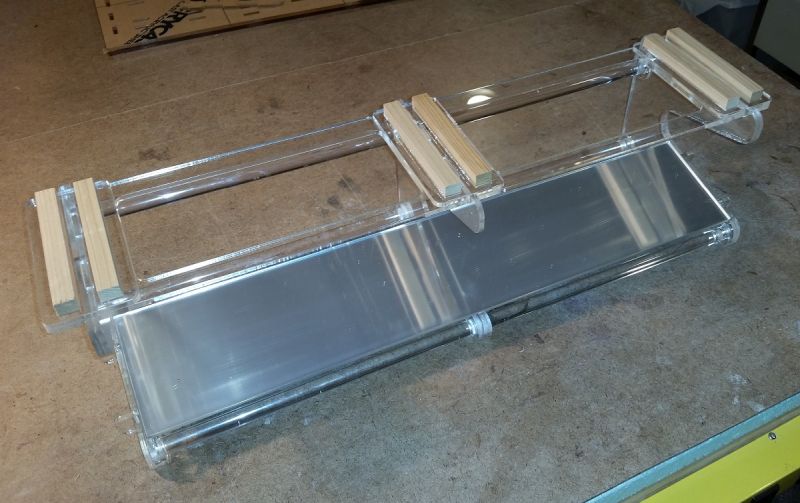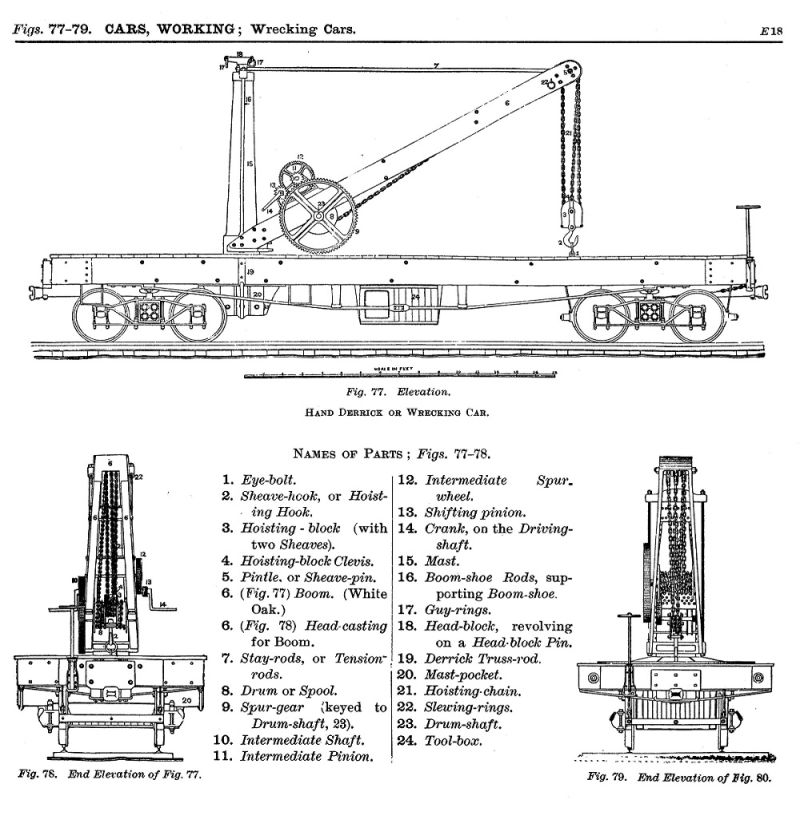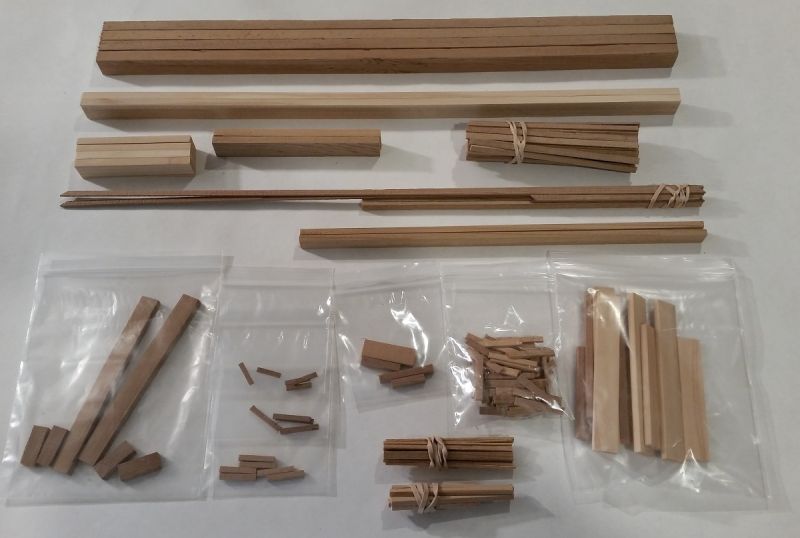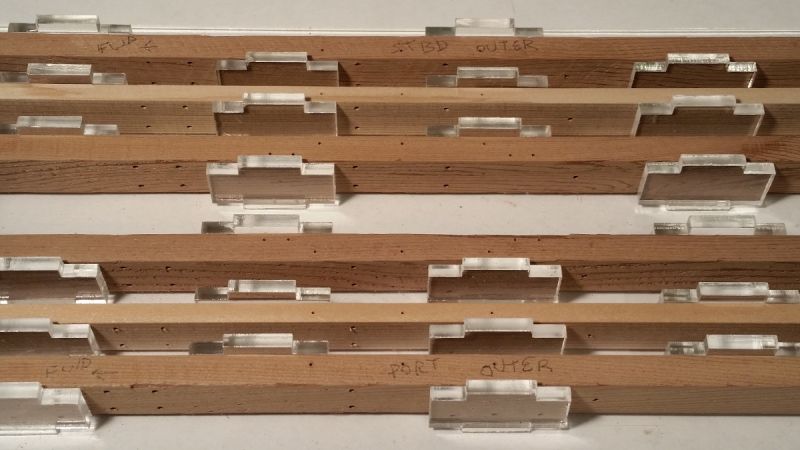Off and on, over a few years, I’ve been researching and computer-modeling a derrick car that the V&T used in the late 1800’s. It’s a long story, and I’m not sure where to start, so I’ll just dive in. Here’s a couple images of the design model.
There’s gobs of hardware on this thing, so lots of 3d printed parts. Lots of individual boards, lots of holes to drill. I’ll post on all those in weeks ahead.
I finally began construction on the project last weekend, on the display. Yeah, I know that sounds weird. But since I’ll be presenting on the car & model at the next V&T conference, I needed a display base that can disassemble and pack flat in a suitcase. I learned the hard way how not to do that with the V&T flanger #51, where I dragged a big wooden display / mirror to show the flanger mechanism. This display also needs a mirror to show the underside, to show the complicated mast base. Here’s the design model,
The parts for the display were cut on the laser from acrylic. The mirror is mirrored plex (which has a protective film on it, so doesn’t look great in this pic).

The parts interlock (without fasteners), and are quite rigid. Now that I’ve put it together though, I realize it doesn’t need those pricey 1/2" rods at all. If I do another, it won’t have those rods, only a couple more laser-cut joists that snap into slots. Another thing, the end pieces are glued/laminated; but it’s hard to do that cleanly, and there’s plenty of micro bubbles visible. I asked my artistically-dependable wife if I should spray the ribs flat black, she said no, no one will notice the bubbles if I don’t point them out. So I’ll go with this thing, and move on to the actual model.
'Mo later,
===>Cliffy












